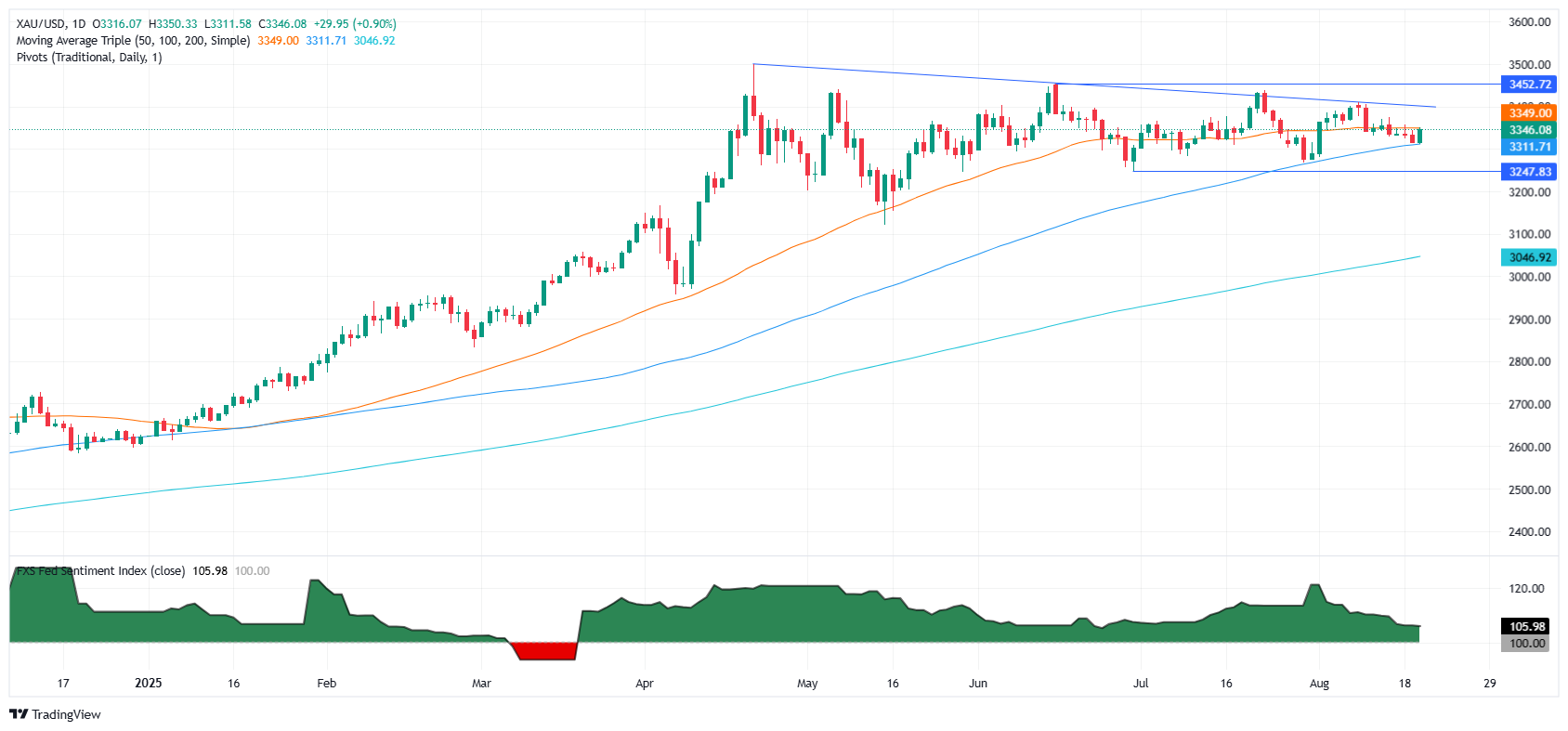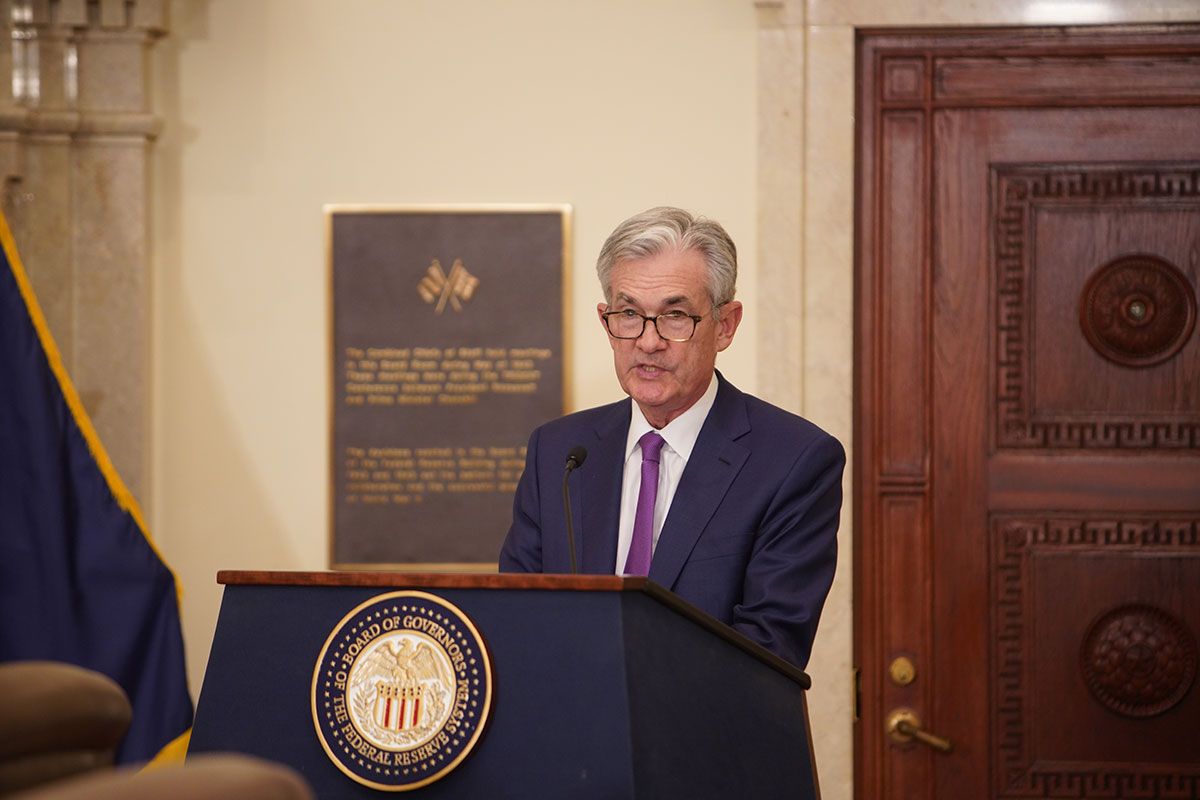- Gold jumps as Trump pressures Fed Governor Cook to resign over alleged mortgage fraud.
- Bloomberg and WSJ report potential falsification of documents; Trump weighing Cook’s dismissal.
- US Dollar dips 0.05% as political pressure undermines Fed credibility ahead of key events.
- Traders eye FOMC Minutes, Initial Jobless Claims, and Powell’s Jackson Hole remarks for Fed guidance.
Gold prices are rising on Wednesday after US President Donald Trump continued to exert pressure on the Federal Reserve (Fed) as he demands Fed Governor Lisa Cook resign due to an investigation of mortgage fraud. Threats of curtailing the Fed’s independence pushed XAU/USD higher, from around $3,330 toward $3,350, its daily high. At the time of writing, Gold trades at $3,342, up 0.84%.
Domestic political issues in the US weighed on the US Dollar. The US Dollar Index (DXY), which tracks the performance of a basket of six currencies against the Greenback, is down 0.05% at 98.21.
A Bloomberg article revealed that Federal Housing Finance Agency (FHFA) Director Bill Pulte leaked information that Lisa Cook “falsified bank documents and property records to acquire more favorable loan terms, potentially committing mortgage fraud under the criminal statute.”
The Wall Street Journal revealed that Trump told aides that he could attempt to fire Cook in response to the fraud accusation.
Aside from this, Gold traders are eyeing the release of the latest Minutes of the Fed’s August meeting, in which the central bank decided to hold rates unchanged, with two dissenters voting for a 25-basis-point (bps) rate cut.
Ahead this week, the US economic docket will feature the release of Initial Jobless Claims data and Fed Chair Jerome Powell's speech at Jackson Hole.
Daily digest market movers: Gold rises as US yields dive
- US Treasury yields are falling across the whole curve, with the 10-year Treasury note down nearly three basis points at 4.281%. US real yields —which are calculated from the nominal yield minus inflation expectations— are down three bps at 1.931% at the time of writing.
- Expectations that the Fed will reduce rates in September remain high, though traders priced out a 50 bps chance that emerged following the US Consumer Price Index (CPI) report. However, July’s PPI spooked investors, who had also bet that the central bank might keep rates unchanged.
- Initial Jobless Claims for the week ending August 16 are expected to rise from 224K to 225K. The same report is likely to show that Continuing Claims increased from 1.953 million to 1.96 million, an indication that the labor market continues to weaken.
- Additionally, business activity figures in the US will be updated by S&P Global. The Manufacturing PMI index in August is expected to show a slight deterioration from 49.8 to 49.5. The Services Index for the same period is projected to dip from 55.7 to 54.2. If the data comes as expected, it would confirm that the economy is cooling amid a high inflationary scenario.
- Aside from this, the Jackson Hole Symposium will kick in, and traders will eye several Fed officials crossing the wires. On Thursday, Atlanta Fed President Raphael Bostic will give a speech.
- Fed Interest Rate Probabilities show that traders have priced in an 85% chance of a quarter percentage point rate cut at the September meeting, according to Prime Market Terminal data.
Technical outlook: Gold price bounces off lows near $3,300, eyes on $3,350
Gold price seems to have bottomed out at around $3,311 on Wednesday as it bounces after a Bloomberg headline suggests an ongoing investigation into Fed Governor Cook. Immediately, the non-yielding metal soared toward $3,350.
Momentum shows that buyers are gaining steam, as depicted by the Relative Strength Index (RSI), which is about to climb above its neutral line.
If XAU/USD clears $3,350, this could pave the way to test the confluence of the 20-day and 50-day Simple Moving Averages (SMAs) between $3,345/48. A breach of those levels clears the path to test $3,400. Overhead lie further key resistance levels, like the June 16 high at $3,452 and ultimately the all-time peak of $3,500.
On the flipside, the first support would be the 100-day Simple Moving Average (SMA) at $3,304.

Gold FAQs
Gold has played a key role in human’s history as it has been widely used as a store of value and medium of exchange. Currently, apart from its shine and usage for jewelry, the precious metal is widely seen as a safe-haven asset, meaning that it is considered a good investment during turbulent times. Gold is also widely seen as a hedge against inflation and against depreciating currencies as it doesn’t rely on any specific issuer or government.
Central banks are the biggest Gold holders. In their aim to support their currencies in turbulent times, central banks tend to diversify their reserves and buy Gold to improve the perceived strength of the economy and the currency. High Gold reserves can be a source of trust for a country’s solvency. Central banks added 1,136 tonnes of Gold worth around $70 billion to their reserves in 2022, according to data from the World Gold Council. This is the highest yearly purchase since records began. Central banks from emerging economies such as China, India and Turkey are quickly increasing their Gold reserves.
Gold has an inverse correlation with the US Dollar and US Treasuries, which are both major reserve and safe-haven assets. When the Dollar depreciates, Gold tends to rise, enabling investors and central banks to diversify their assets in turbulent times. Gold is also inversely correlated with risk assets. A rally in the stock market tends to weaken Gold price, while sell-offs in riskier markets tend to favor the precious metal.
The price can move due to a wide range of factors. Geopolitical instability or fears of a deep recession can quickly make Gold price escalate due to its safe-haven status. As a yield-less asset, Gold tends to rise with lower interest rates, while higher cost of money usually weighs down on the yellow metal. Still, most moves depend on how the US Dollar (USD) behaves as the asset is priced in dollars (XAU/USD). A strong Dollar tends to keep the price of Gold controlled, whereas a weaker Dollar is likely to push Gold prices up.







